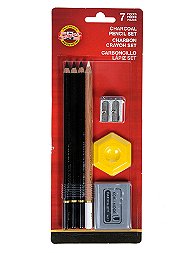Styles & Periods

Prehistoric Art
Humans have been making art for at least 40,000 years, perhaps even longer. Prehistoric Art spans a vast period of time, and has been discovered in some form throughout much of the world. By definition, Prehistoric Art is art that was created before a reliable historical record exists for the culture responsible. Most often this refers to written record. Evidence suggests that in the Middle Paleolithic era (200,000 to 50,000 years ago), early humans were developing crafting skills for purely functional purposes. This craftsmanship can be observed in stone tools, such as bifaces, tools that are deliberately shaped by flaking both sides. In these tools, an awareness of symmetry can be inferred, hinting that our ancestors had developed some sense, albeit primitive, of the aesthetic. If tools from the Middle Paleolithic serve to hint at man's emerging artistic ability, then discoveries from the Upper Paleolithic (40,000 to 10,000 years ago) are a ringing testimony. Art from this period includes figurines, cave paintings, and carvings. Among these works are small feminine figures carved in stone. Rather than aiming for realism in proportion, these figures’ exaggerated anatomy suggests symbols of fertility; the pieces have been termed “Venuses” after the Greco-Roman goddess of love. Large animals were the primary artistic concern of the Upper Paleolithic cave painters. Animals were rendered in profile; deer, bison and horses race across the ceilings in the cave paintings of Lascaux and Altamira. By the end of the Upper Paleolithic, the human impetus to create art had incredible momentum, and the fusion of form and function are evident. Decorated pottery vessels have been discovered in Brazil and Venezuela, coinciding with finds from the Korean Jeulmun Pottery Period. From the megaliths and metalwork of Europe, to the stylized rock art of Saharan Africa, and the elaborate textiles, gold work, and masonry of South America, Prehistoric Art provides significant insight into the development of human creativity.
- 20th Century Architecture
- 20th Century Photography
- 20th Century Sculpture
- Abstract Expressionism
- Aegean Art
- African Art
- Archaic Asian Art
- Art Nouveau
- Arte Povera
- Ashcan School
- Avant-Garde
- Barbizon School
- Baroque
- Bauhaus
- Body Art
- Buddhist Art
- Byzantine Art
- Carolingian Art
- Celtic Art/ Early Medieval Art
- Chinese Painting
- Color-Field Painting
- Computer Art
- Conceptual Art
- Constructivism
- Contemporary Art in Asia
- Cubism
- Dadaism
- De Stijl
- Die Blaue Vier
- Die Brücke
- Divisionism
- Early Christian Art
- Early Renaissance
- Earthworks
- Egyptian Art
- Environmental Art
- Etruscan Art
- Expressionism
- Fauvism
- Feminist Art
- Funk Art
- Futurism
- Gothic Art
- Graffiti Art
- Greek Art
- Happenings
- Hard-Edge Painting
- Hellenistic Art
- High Renaissance
- Impressionism
- Indian Art
- International Gothic
- Islamic Art
- Kinetic Art
- Korean Ceramics
- Mannerism
- Metaphysical Painting
- Minimalism
- Modernism
- Native American Art
- Near Eastern Art
- Neoclassicism
- Neo-Expressionism
- Neoplasticism
- Northern Renaissance
- Oceanic Art
- Optical Art
- Ottonian Art
- Outsider Art
- Performance Art
- Photo Realism
- Pop Art
- Post-Impressionism
- Postminimalism
- Post-Painterly Abstraction
- Precisionism
- Prehistoric Art
- Pre-Raphaelites
- Process Art
- Public Art
- Purism
- Realism
- Regionalism
- Rococo
- Roman Art
- Romanesque
- Romanticism
- Social Realism
- Spatialism
- Suprematism
- Surrealism
- Symbolism
- Synthetism
- Tonalism
- Video Art
|
|
|
|||||||
|
|
|
|
||||||
|
|
|
|
||||||
|
|||||||||
 Download FREE coloring
Download FREE coloring
book pages to color at
home or school.
View Pages »



















